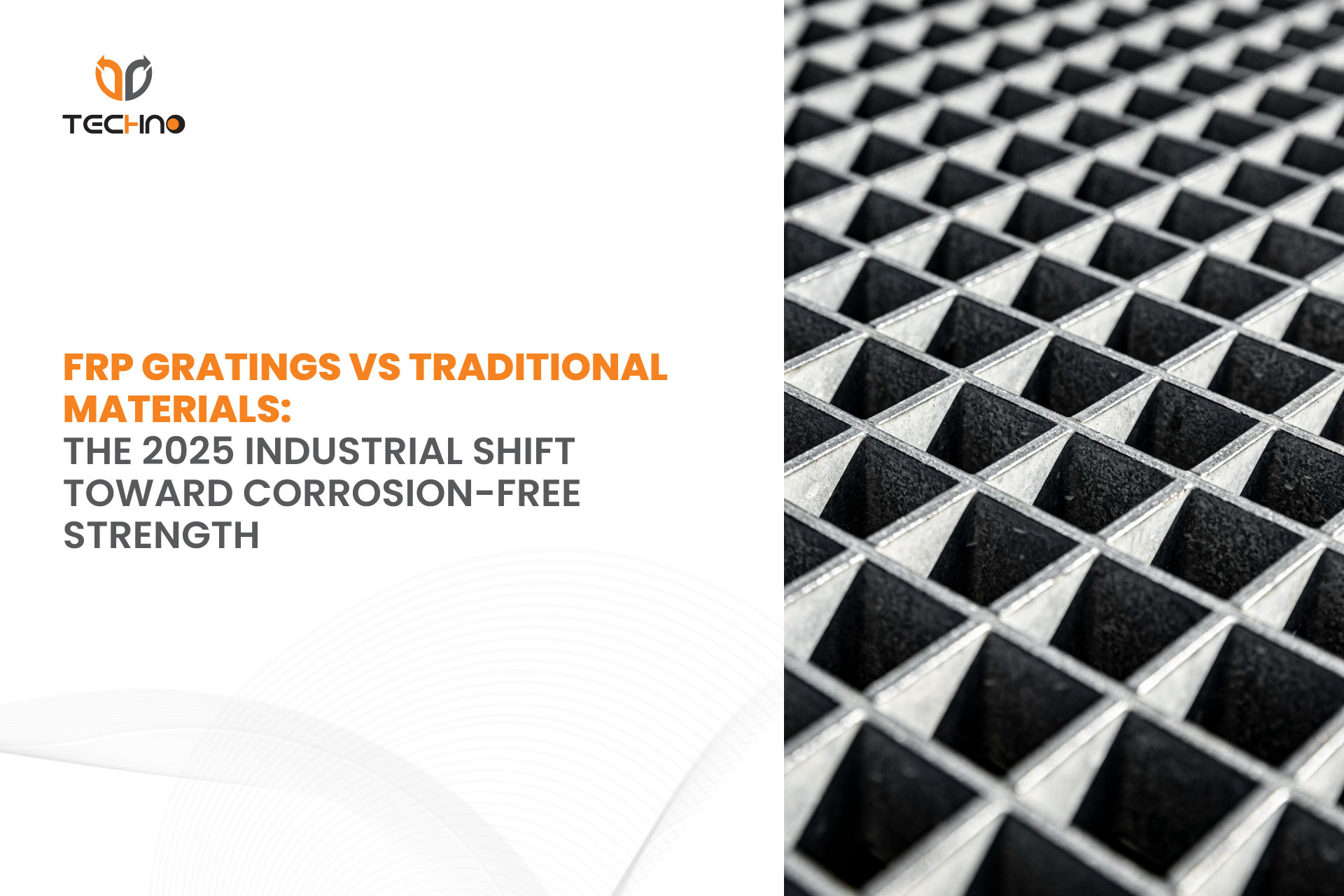
In the industrial world, the choice of construction material can make a big difference in safety, performance, and long-term cost. Traditionally, materials such as steel, aluminum, and concrete have dominated platform, walkway, and flooring applications. However, a new contender – FRP (Fiberglass Reinforced Plastic) grating – is rapidly changing the game.
This article explores the key differences between FRP grating and traditional materials, and why many modern industries are making the switch.
What Are FRP Gratings?
FRP grating is a composite material made from a combination of fiberglass and resins, designed to provide high strength and corrosion resistance while being lightweight. They are commonly used in industrial floors, chemical plants, marine applications, and wastewater treatment facilities.
To understand the material science behind FRP, you can explore Composites World’s overview of fiberglass-reinforced plastics – a detailed resource explaining how FRP composites are engineered for strength and reliability.
1. Strength and Durability
Traditional Materials:
Steel and aluminum are strong but prone to rust and corrosion, especially in harsh chemical or marine environments. Concrete, although strong, can crack or erode over time.
FRP Gratings:
FRP provides excellent tensile strength while maintaining ductility. It resists impact, fatigue, and environmental degradation – ensuring long-lasting performance even under heavy loads or extreme weather conditions.
2. Corrosion and Chemical Resistance
Traditional Materials:
Metals rust, and concrete absorbs chemicals – leading to damage, contamination, and safety risks.
FRP Gratings:
Designed for chemical and moisture resistance, FRP performs exceptionally in acidic, salty, and humid conditions. That is why they are preferred in chemical processing, marine, and wastewater plants.
3. Weight and Installation
Traditional Materials:
Steel or concrete gratings are heavy and require mechanical lifting devices, increasing installation time and labor costs.
FRP Gratings:
FRP is up to 70% lighter than steel. Its lightweight nature allows easy transportation and quick installation without heavy equipment.
4. Maintenance and Lifecycle Cost
Traditional Materials:
Requires regular painting, coating, or anti-rust treatment. Over time, maintenance costs may exceed the initial material cost.
FRP Gratings:
FRP requires minimal maintenance. It does not require painting or surface treatment, making it a low-cost, long-term investment.
5. Safety and Performance
Traditional Materials:
Metal surfaces can be slippery, especially when wet. Concrete can crack, resulting in an uneven, unsafe floor.
FRP Gratings:
FRP surfaces are available in anti-slip finishes and are non-conductive, providing additional safety in electrical and wet environments.
6. Environmental Benefits
Traditional Materials:
Heavy production processes of steel and concrete leave a large carbon footprint.
FRP Gratings:
FRP materials are environmentally friendly, require less energy to manufacture, and have a long lifespan, reducing waste and environmental impact.
Why Industries Are Switching to FRP Gratings?
In sectors such as chemical processing, oil and gas, food industry, power plants, and marine structures, companies are recognizing the efficiency, durability, and cost-effectiveness of FRP grating. This shift isn’t just a trend – it’s a smart investment in security, stability, and long-term value.
Conclusion
While traditional materials like steel and concrete have served industries well for decades, FRP grating is proving to be a better choice in today’s demanding environment. With its light strength, corrosion resistance, easy installation, and safety features, FRP grating is helping industries move forward – stronger, safer, and smarter.
If you are looking for durable and high-quality FRP solutions, choose Shree Raj Industrial Products – a trusted name in industrial FRP manufacturing and supply.
Contact us today to find the right FRP gratings for your project.

Comments are closed